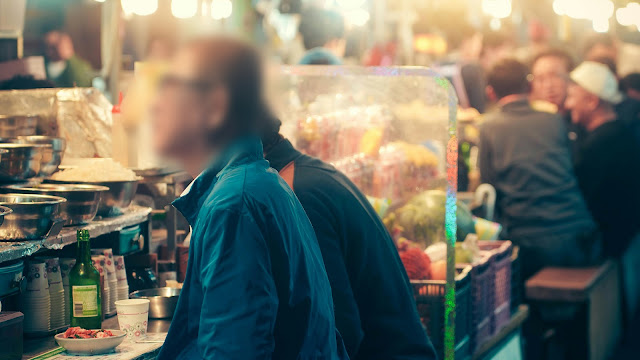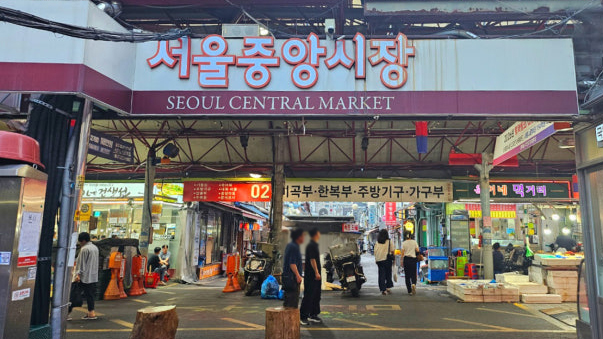If you’re visiting Seoul, make sure to explore one of the city’s many traditional markets.
 |
| Gwangjang Market |
These markets offer a glimpse into the daily life of locals, the flavors of Korean street food, and a truly authentic cultural vibe. While Gwangjang Market is one of the most famous, it’s recently become overcrowded and pricey—many visitors leave feeling a bit disappointed.
But Gwangjang is just the beginning.
Look beyond the obvious, and you’ll find hidden gems where you can experience traditional Korean culture with fewer crowds and better prices. Here are 3 lesser-known traditional markets in Seoul that are perfect for foreign travelers.
✅ Why Visit Traditional Markets in Seoul?
-
Get a real taste of everyday Korean food culture
-
Experience authentic local life through small shops and stalls
-
Enjoy delicious Korean dishes at very reasonable prices
-
Perfect for those who want to see the real Korea—not just the tourist version
1. Seoul Jungang Market – A Hidden Gem Where Old Meets New
 |
| Seoul Juagang Market, CC by 2spirit |
📍 Location: Jung-gu, Seoul (1-minute walk from Sindang Station, Exit 1)
Jungang Market isn’t as big as Gwangjang, but it offers a much quieter, more welcoming atmosphere. You’ll find Korean street foods like fish cakes, dried seafood, and tteokbokki, as well as stalls selling fresh produce. This market is popular with locals and feels genuinely authentic.
🛍 Must-Try Foods
-
Fresh Fish Cakes – Made on the spot
-
Grilled Squid – Best enjoyed with a cold beer
👍 Tip: Since there aren’t many tourists, learning a few basic Korean phrases will go a long way!
2. Cheongnyangni Market – The Heart of the Local Community
 |
| Cheongnyangni Market (Jokbal), CC By dodoskaao77 |
📍 Location: Dongdaemun-gu, Seoul (3-minute walk from Cheongnyangni Station, Exit 1)
Cheongnyangni Market has been a part of local life for generations. Beyond the fresh food stalls, hidden eateries in narrow alleys serve some of the most authentic Korean comfort foods. This market is less about tourism and more about everyday life in Seoul.
🛍 Must-Try Foods
-
Jokbal – Korean-style braised pig’s feet
-
Fried Chicken – Korean-style whole fried chicken
-
Flat Dumplings – Unique pan-fried dumplings you won’t find elsewhere
💡 Tip: Don’t miss Gyeongdong Market nearby—famous for its traditional herbal medicine shops!
3. Tongin Market – Where Tradition Meets Hanok Village Charm
 |
| Traditional Brass Coins (Yeopjeon), Tongin Market, CC by sora7712 |
📍 Location: Jongno-gu, Seoul (10-minute walk from Gyeongbokgung Station, Exit 2)
Perfect after visiting Gyeongbokgung Palace, Tongin Market is one of the most foreigner-friendly markets in the city. It’s known for its unique “Yeopjeon Lunchbox” experience, where you buy traditional brass coins and exchange them for foods at different stalls to build your own bento.
🛍 Must-Try Foods
-
Oil Tteokbokki – A unique version only found here
-
Custom Bento Box – Mix and match your own Korean lunch
💡 Tip: Since it’s near Seochon Village, it’s a great chance to explore this charming hanok neighborhood too.
🧭 How to Get There
Seoul’s public transportation is tourist-friendly, with English signs and announcements everywhere.
Each of these markets is less than a 10-minute walk from a subway station, making them easy additions to any travel itinerary.
🎯 Final Thoughts: See More Than Just Gwangjang Market
Gwangjang is great—but it’s not the only traditional market worth visiting in Seoul.
For a quieter, more authentic experience, explore these lesser-known markets where real Korean life unfolds. You’ll find welcoming locals, fair prices, and unforgettable food that you won’t get in a typical tourist hotspot.